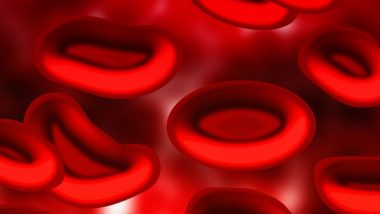September 13 is observed as World Sepsis Day to raise awareness about this life-threatening health condition. World Sepsis Day 2019 falls on Friday the 13th. The day is an opportunity for people to come together, understand sepsis and to unite in the fight against it. Data from countries such as UK, US, Australia and Brazil attest to this fact. According to the Centers for Disease Control and Prevention, “Sepsis is the body’s extreme response to an infection.” It is a medical emergency where the body’s massive reaction to the infection ends up injuring its own cells and organs. It can lead to shock, organ failure and eventually death if not treated on time. Sepsis results in millions of death annually. Through better awareness and early intervention at a community and institutional level, sepsis-related deaths can be reduced by 20 percent globally. Man Nearly Dies After He Bites His Nails: 8 Horrible Things Nail-Biting Does to Your Health.
What are the Causes of Sepsis?
When a pathogen infects the body, the immune system tries to eliminate it. In most cases, the body’s defences are enough to route the infection. In some cases, we may need to take an antibiotic or two to aid the body. But in rare cases, the infection becomes so intense that the body has to take an extreme measure to eliminate the infection. In so doing, the immune system unwittingly injures the body’s own cells, leading to multiple organ failure and death. Sepsis Patients May Be At Greater Risk of Stroke, Says Study.
The causes of sepsis are usually infections:
- Pneumonia
- Infection in the stomach
- Infection in the kidney
- Infection in blood
The germs that cause sepsis are:
- Staphylococcus aureus (staph)
- Escherichia coli (E. coli)
- Some types of Streptococcus
What are the Symptoms of Sepsis?
Sepsis symptoms can range from stage one to septic shock. Here are some of the symptoms, graded according to severity. New Clues to Sepsis May Speed Diagnosis.
- A high fever above 101 degrees Fahrenheit
- Increased heart rate – more than 90 beats per minute
- Infection
- Skin discolouration in patches
- Extreme pain
- Clammy skin
- Decreased urine output
- Confusion and other signs of disorientation
- Low platelet count
- Abnormal heart functions
- Shivering
- Loss of consciousness
- Weakness
- Blood clots forming in multiple places
- Lack of oxygen supply to body parts (due to clots)
- Tissue death or gangrene
Who Is At Risk for Sepsis?
Any person who is immunocompromised (having a weak immune system) is at risk for sepsis. These include:
- Senior citizens above the age of 65
- People with underlying medical conditions such as cancers, kidney diseases, diabetes and lung diseases
- People on immunosuppressants like corticosteroids
- Children below the age of one
What is the Treatment for Sepsis?
An intensive approach is needed to treat sepsis. To treat sepsis, the person has to be kept in an intensive care unit with around-the-clock monitoring. If the person goes into septic shock, doctors should be ready to administer life-saving treatment. Here is the treatment protocol for sepsis:
- Antibiotics to assist the immune system and to kill the infection-causing pathogen
- Intravenous fluids to maintain hydration to keep the blood pressure from dropping
- Vasopressors to constrict blood vessels and increase blood pressure
How to Prevent Sepsis
Prevention is better than cure when it comes to sepsis. Avoiding infection and nipping it at the bud are the two important steps towards curbing sepsis. These include:
- Get vaccinated against flu, pneumonia and other infections
- Being hygienic to avoid catching an infection in the first place
- Taking care of open wounds
- Getting medical attention on time while treating infections
What Are the 3 Stages of Sepsis?
Sepsis is divided into three stages according to its severity:
Stage one or Systemic Inflammation Response Syndrome (SIRS) marked by high or low body temperature, increased heart rate and respiratory rate, high or low white blood cell count and underlying infection.
Stage two or Severe Sepsis where signs of organ failure start showing. Signs such as reduced urine output, disorientation, low platelet count, laboured breathing, erratic heart function and abdominal pain are seen at this stage. Sepsis is said to be severe when there’s hypotension (low blood pressure) and low blood flow to an organ.
Stage three or Septic Shock is the final and the most severe stage. At this point, symptoms such as low blood pressure and organ failure are seen. The chances of mortality at this stage are between 30 to 50 percent.
(The above story first appeared on LatestLY on Sep 13, 2019 11:30 AM IST. For more news and updates on politics, world, sports, entertainment and lifestyle, log on to our website latestly.com).













 Quickly
Quickly




















